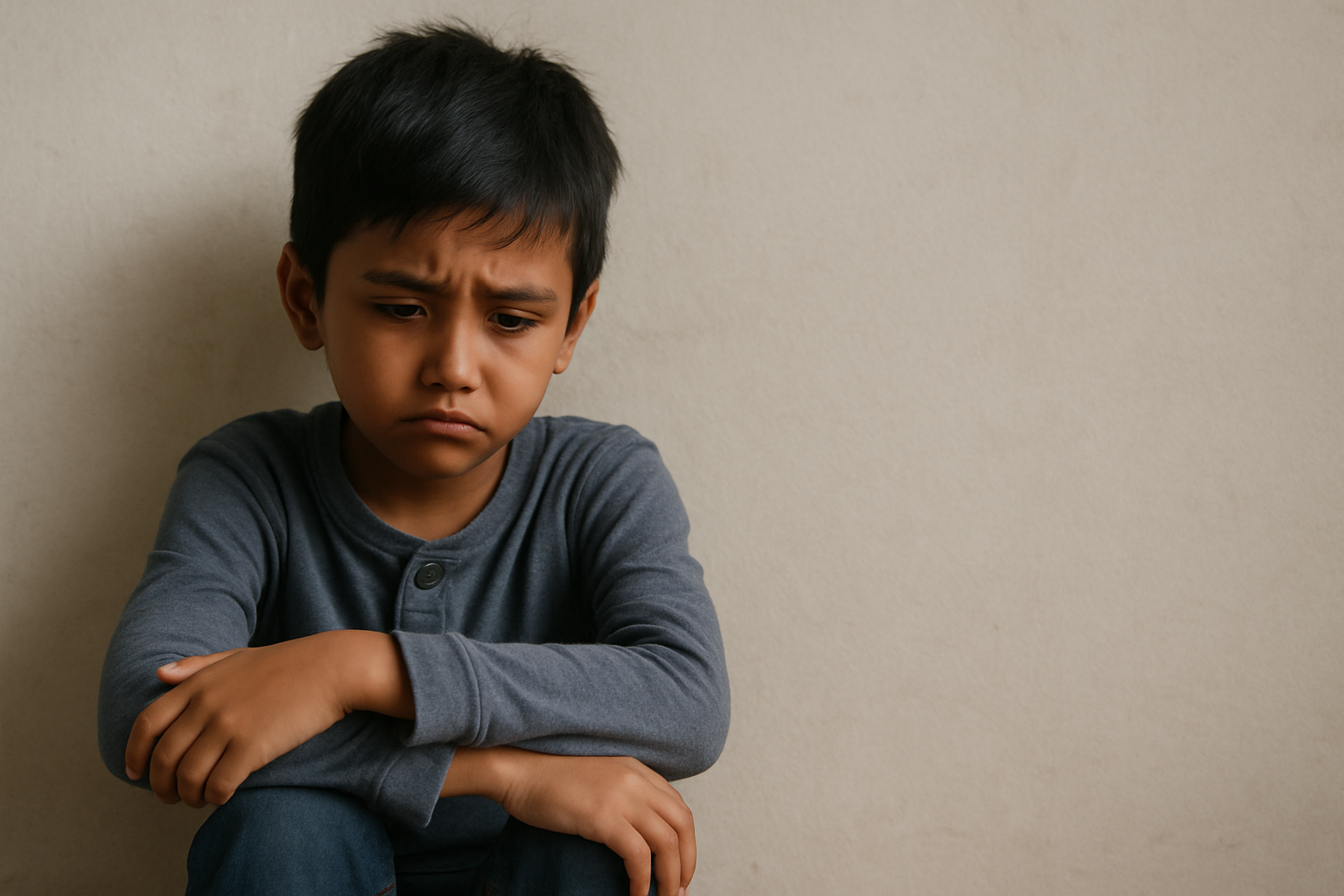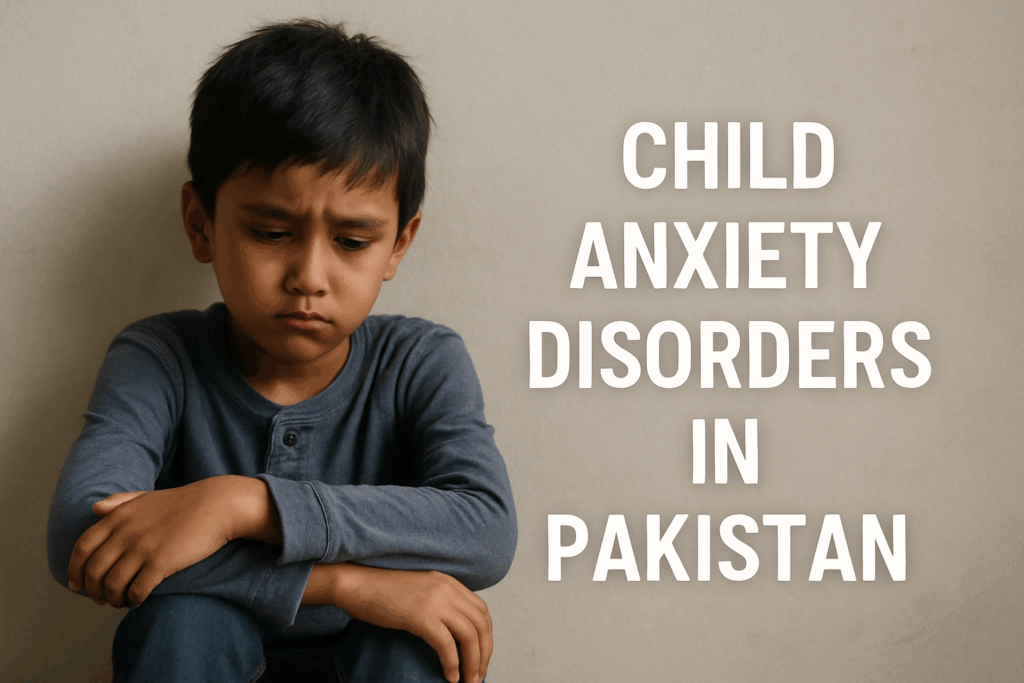Anxiety, a global disorder, does not limit its perverse acts to adults alone; it survives in innocence by creeping into the conscience of a child. Sometimes, symptoms displayed by children are overlooked by their caregivers, who might just be passing it off as a phase or labeling it as shyness. Due to limited insight into mental disorders in Pakistan, stereotypes are attached to these ailments by society, hence creating a barrier to acceptance. However, anxiety qualifies to be considered a serious disorder that cannot be brushed aside but needs specific focus and fitting intervention.
Can a Child Actually Have Anxiety?
To answer this question, yes, a World Health Organization (WHO) description of anxiety explains that it is one of the most widely reported incidences of mental disorder among children. It is estimated that between 15% and 20% of children and adolescents have an anxiety disorder. It may begin at the child’s age and, more likely, within the early preschool years, and may carry on to adulthood unless treated. Untreated anxiety disorders are detrimental in so many areas: social relationships are affected, mental health status is interfered with, and school performance, general health, and all are in jeopardy.
Some anxiety disorders in children include the following:
Separation Anxiety Disorder (SAD)
Panic Disorder (PD)
Social Anxiety Disorder (SAD)
Generalized Anxiety Disorder (GAD)
The Phobias
Symptoms of Anxiety Disorders in Children
The symptoms of anxiety disorder may pose a challenge in a child, as the symptoms may differ from those of an adult. The most common signs of anxiety disorders in children can be noted as follows:
Worrying, crying more than other children of their age.
Complaining about not being well without any medical reason. They may complain of stomachaches, headaches, or sore muscles.
Difficulties sleeping, scared to sleep alone.
Recurring nightmares.
Restlessness.
Clingy and avoiding school.
It should be noted that children cannot tell what they are feeling; it is best to note any physical changes or behavior.
Causes of Anxiety in Children
Various factors are causing anxiety in children.
Children who have a family history of anxiety or depression are at particular risk.
The environment under which children are growing has also contributed to this factor, for example, a highly stressful environment, overprotective parents, bullying, and traumatic events contribute to anxiety.
Shy and sensitive children are more vulnerable.
The loss of a parent and moving to a new home or school are other conditions.
Normal Age of Onset for Anxiety in Children
Several researchers reported that, while anxiety may arise in children typically between 18 to 36 months of age, the diagnosis itself may be made only by about 6 or 7 years of age. By that period, much is happening in the child’s life concerning issues like starting school, developing friendships, and acquiring class- and group-based socialization skills. Shy children will find it comparatively harder to make friends and keep them, thus increasing their anxiety.
Ways to Treat Anxiety in Children
We can use some remedies in conjunction with emotional support and a calm environment.
A calm-down corner should be put in place that presents a space with calming objects such as soft pillows for the senses and colors on the walls and curtains, which would divert the child from the stressor.
Children love stories. Stories or books can be used, where the characters face fears, in order to normalize an experience.
Eliminate negative triggers such as unnecessary news or conversations that do not help alleviate anxiety.
Natural treatment for children with anxiety disorder
It encompasses changes in lifestyle and non-pharmaceutical modification. A few of the common natural treatments most closely related to child anxiety disorders are discussed below.
Disciplining and planning their day according to a specific routine can help mitigate the symptoms of anxiety in children.
Physical exercises also contribute to the release of the hormone endorphins, known to be very important in mood regulation.
Teaching and encouraging deep breathing and the practice of mindfulness meditation with children would be of great help in handling anxiety.
Fourth, balanced nutrition is key to preventing children’s anxiety and is thus critical, as fruits, vegetables, and omega-3-rich foods will keep them healthy.
Quality sleep can also improve symptoms of anxiety.
Child Anxiety-the 333 Rule
It is one of the widely and reasonably applicable techniques of dealing with anxiety. You may do this whenever something triggers you. You find three things that you can see, three sounds that you can hear, and three parts of your body that you can move. This will help put you back in control and calm your mind. In other words, it is a method of distraction against anxiety: shifting focus to your senses and, thus, being aware of the present. This diverts and brings the child to the present to calm the anxiety, thus easing the shift of thought and/or somatic tension.
What can you do to help your anxious child?
Anxiety differs from the other disorders in that intense support and understanding are often required to heal the child, followed only after parents, teachers, and caregivers have readily offered their help. Some practicable ways exist to help any child suffering from anxiety.
The very first step is listening: unfettered listening to a child sharing his or her issues. All the involved adults should lend an ear to the child’s grievances.
Help them label their feelings with prompts: It looks like you are worried about tomorrow’s exam.
Encourage them to take small steps facing it rather than pretending it does not exist; that is where they will learn problem-solving skills.
Children learn by modeling. Children copy the behavior of adults. Hence, always remain composed even in the face of stressful situations in the presence of a child.
Another way is to limit screen time. Nowadays, screen addiction is one of the most common causes of various mental disorders among children. Limiting screen time will curb some of the unnatural anxiety-causing content.
Gradual exposure is another elaboration they should have; the principle, make them face situations in an orderly manner, which in turn will develop resilience in the children.
Role of SehatYab in Managing Child Anxiety
SehatYab is a health-tech platform for the promotion of children’s mental and behavioral health. It makes available prompt, affordable online counseling with a licensed child therapist to achieve mental health support. This platform makes a suitable environment for families with children suffering from anxiety. Workshops for parental counseling and education are also offered. SehatYab illustrates that childhood anxiety is not a fleeting phase but an entity in itself, thus requiring care and empathy as a mental health concern. Early identification will help intervention; therefore, platforms like SehatYab deliver interventions close to the heart in treating anxiety in children.

